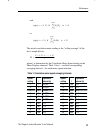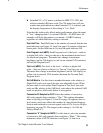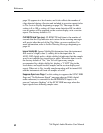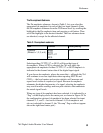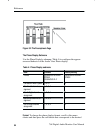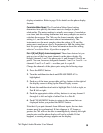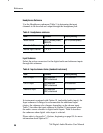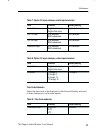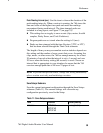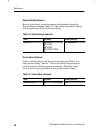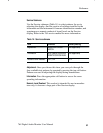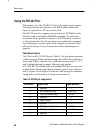
Reference
764 Digital Audio Monitor User Manual
55
display orientation. Refer to page 26 for details on the phase display
formats.
Correlation Meter Speed. The Correlation Meter Speed setting
determines how quickly the meter reacts to changes in phase
relationship. The meter reading is actually an average of correlation
over time, and this setting determines how many samples are used to
calculate the average. The 764 uses the fewest samples when this
setting is 1, and the meter reacts almost instantaneously. The
instrument uses the most samples when the setting is 20, and the
meter reacts much more slowly. Experiment to find the setting that
best fits your application. For more information about this setting,
refer to Correlation Meter Algorithm on page 46.
Pair A [B] Left [Right] channel assignment. These four choices let you
pair any two of the four input channels on the phase display. By
default, channels 1 and 2 are phase pair A, and channels 3 and 4 are
pair B. You can, however, designate channels 1 and 3 or 1 and 4—or
channels 2 and 3 or 2 and 4—as either pair A or pair B.
Change the channels of the phase pairs using the following steps:
1. Press the MENU button.
2. Turn the multifunction knob until PHASE DISPLAY is
highlighted.
3. Push any of the inner group white soft key buttons to the right of
the display screen to bring up the Phase Display screen.
4. Rotate the multifunction knob to highlight Pair A left or right, or
Pair B left or right..
5. Push the appropriate white soft key buttons to set any channel 1
through 4 to left and right of either Pair A or Pair B.
6. Push CLEAR MENU button to return to the screen that was
displayed before you pushed the MENU button.
Note that if you pair channels from different inputs, the two data
streams must be synchronized. If data slippage is 1/2 frame or
greater, the 764 will not be able to unambiguously identify left-right
sample pairs and the phase display will not be reliable. If that
happens, a warning message appears on the display.



